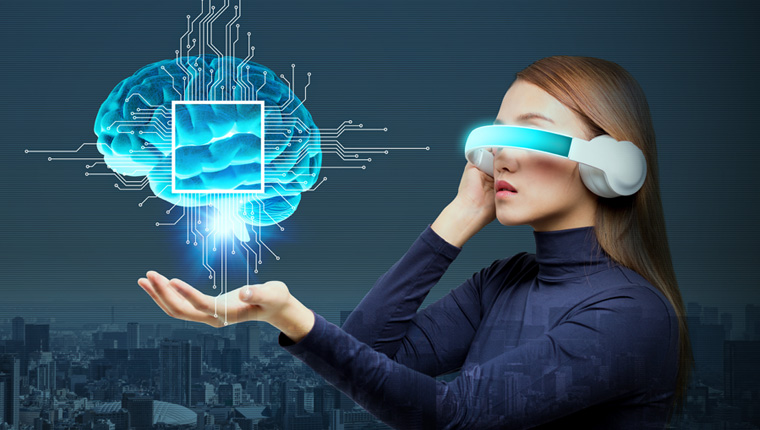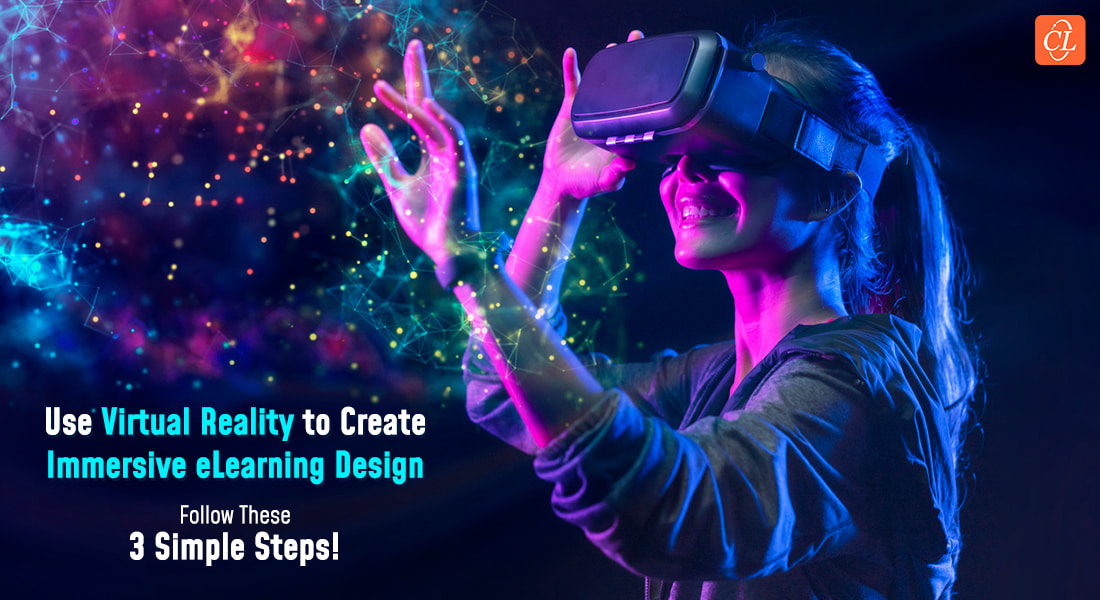Why Use Virtual Reality to Train Your Employees?

“VR is unique in creating this sense of presence, like you’re right there with another person or in another place. It’s not about escaping reality, it’s about making it better.” – Mark Zuckerburg
Virtual Reality, often referred to as VR, is all about replacing actual reality with a virtual, computer-generated environment, allowing individuals to immerse themselves in a whole new world. Virtual Reality is indeed one of the most popular buzzwords in today’s world. But the origin of VR is not recent.
Why Use VR in eLearning?
As VR headsets are becoming more and more affordable and comfortable, the idea of training using Virtual Reality is being embraced by the eLearning industry. VR helps:
- Provide a safe platform to practice
- Merge learning styles, increasing retention
- Increase learner engagement
- Increase the pace of learning
The origin dates back to the year 1962 when Morton Leonard Heilig invented the Sensorama, a mechanical device with a 3D display, vibrating seat, fan, stereo sound, and a scent producer. It was basically a box where people could put in their heads and watch a movie, while having all their senses simulated. One of the movies was that of a detailed bicycle ride through Brooklyn where the person could literally feel the wind on their hair and the vibrations in their seat.
It was not until 1968 that the first VR headset was designed by a computer scientist named Ivan Sutherland. However, this did not develop beyond a laboratory project, probably due to the fact that the device’s weight required it to be suspended from the ceiling.
A video of the first VR headset
Well, the dream of donning VR headsets has become a reality now – all thanks to companies such as Samsung and Google. As these headsets are becoming more and more affordable and comfortable, the idea of training using Virtual Reality is being embraced by the eLearning industry.
But, Why Use Virtual Reality for Training?
1. Provides a safe platform to practice
Imagine training surgeons on performing surgeries. Now this is not something they can practice in real life. It is in such situations Virtual Reality can be a blessing. Once a Virtual Reality course is rolled out, surgeons can practice without the fear of failure or causing any harm. This will help learners actually determine their competencies before performing the actions in real life.
A study states, “The immersive VR environment, allows for an effective way to visualize and communicate the impact of major construction events in existing facilities that could potentially be missed when viewing through traditional methods.”
Simulation-based courses offer learners a safe platform to practice on, but do you think there is anything that can beat the feel of actually collaborating in the real world as in Virtual Reality?
Think about it.
2. Merges learning styles, increasing retention
I am sure you are aware of the three different types of learning styles – Visual, Auditory, and Kinesthetic. Every single individual has their own style of learning and it’s extremely important you give learners a personalized learning experience to impart effective training.
Training through Virtual Reality provides just that! When you provide training through VR, your employees are not just limited to reading large chunks of text or gazing at illustrations. Instead, they are being provided a chance to explore using all their sensory organs. They can see everything they want to see, listen to the related sounds, and also gain hands on experience on all they have to perform in the real world.
What else could be a better way to facilitate knowledge retention?
3. Increases learner engagement
One of the main reasons VR is just perfect for eLearning is the level of immersion it offers. One student, when asked about the experience with VR, in a research conducted by the University of Gothenburg said it helped them focus on what was supposed to do be done and not get distracted by the surroundings.
Distraction is the main enemy of learning. Suppose you are taking a course on your smartphone; you might get distracted when a notification pops up. And I don’t think I need to mention the number of distractions your employees can come across when being trained in a classroom. But, Virtual Reality is known for its ability to block all sorts of distractions around us, allowing employees to focus on what they should be focusing on – learning.
4. Increases the pace of learning
When it comes to training on complex subjects, employees tend to take quite a lot of time to learn. Well, they can’t be blamed as it all depends on the way they are being trained. But if you choose to train your employees on complex topics using Virtual Reality, this will no more be a problem.
Since Virtual reality provides learners a completely immersive learning experience, processing the information requires lesser cognitive load. Thus, it becomes quite easy for learners to understand a concept that is being taught, eventually leading to an increased pace of learning.
The Best Examples of Virtual Reality
Kentucky Fried Chicken Trains its Cooks
KFC used Virtual Reality to train its cooks on how to prepare its signature fried chicken via the Oculus Rift headgear. The training was designed as a virtual escape-room game where employees can escape the room if and only if they display mastery in preparing the recipe perfectly. According to an article, the main reason they used VR to train its cooks was to reduce the overall time of training. Training through VR just took 10 minutes as opposed to 25 minutes in real life.
UPS Trains Drivers on Handling Road Hazards
UPS, a multinational package delivery company, trains its drivers to handle road hazards using Virtual Reality. Drivers are placed behind the wheels and provided VR headsets to experience driving along various streets. The main purpose of this training is to allow learners to eventually spot and identify road hazards, thus preparing them for any future obstacles they might face when they are all set for actual deliveries.
Even though VR is the talk of the town in the eLearning industry, organizations seem to be a little hesitant in incorporating it as a training strategy. Well, I am pretty sure after reading this blog, you are convinced that Virtual Reality is indeed a blessing to the training fraternity. Pair your imagination with your training needs and adopt this amazing, emerging technology.




![Leveraging AR/VR Technology in eLearning [5 Best Ways + Advantages + Disadvantages]](https://blog.commlabindia.com/hubfs/Imported_Blog_Media/Leveraging-ARVR-Technology-in-eLearning-5-Best-Ways-Advantages-Disadvantages.jpg)
